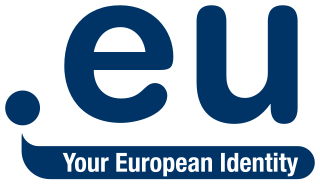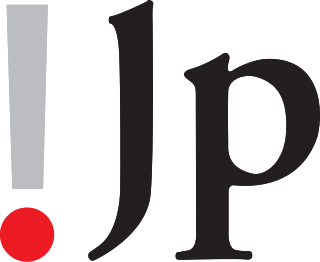
Harald Tveit Alvestrand is a Norwegian computer scientist. He was chair of the Internet Engineering Task Force (IETF) from 2001 until 2005, succeeding Fred Baker. Within the IETF, Alvestrand was earlier the chair of the Areas for Applications from 1995 until 1997, and of Operations and Management in 1998.
A domain name registry is a database of all domain names and the associated registrant information in the top level domains of the Domain Name System (DNS) of the Internet that enables third party entities to request administrative control of a domain name. Most registries operate on the top-level and second-level of the DNS.

Svalbard and Jan Mayen is a statistical designation defined by ISO 3166-1 for a collective grouping of two remote jurisdictions of Norway: Svalbard and Jan Mayen. While the two are combined for the purposes of the International Organization for Standardization (ISO) category, they are not administratively related. This has further resulted in the country code top-level domain .sj being issued for Svalbard and Jan Mayen, and ISO 3166-2:SJ. The United Nations Statistics Division also uses this code, but has named it Svalbard and Jan Mayen Islands.

.eu is the country code top-level domain (ccTLD) for the European Union (EU). Launched on 7 December 2005, the domain is available for any person, company or organization based in the European Union. This was extended to the European Economic Area in 2014, after the regulation was incorporated into the EEA Agreement, and hence is also available for any person, company or organization based in Iceland, Liechtenstein and Norway. The TLD is administered by EURid, a consortium originally consisting of the national ccTLD registry operators of Belgium, Sweden, and Italy, joined later by the national registry operator of the Czech Republic. Trademark owners were able to submit registrations through a sunrise period, in an effort to prevent cybersquatting. Full registration started on 7 April 2006.

.us is the Internet country code top-level domain (ccTLD) for the United States. It was established in early 1985. Registrants of .us domains must be U.S. citizens, residents, or organizations, or a foreign entity with a presence in the United States. Most registrants in the U.S. have registered for .com, .net, .org and other gTLDs, instead of .us, which has primarily been used by state and local governments, even though private entities may also register .us domains.
.ca is the Internet country code top-level domain (ccTLD) for Canada. The domain name registry that operates it is the Canadian Internet Registration Authority (CIRA).

.se, formerly branded as .SE, is the Internet country code top-level domain (ccTLD) for Sweden. The top domain is operated by The Internet Foundation in Sweden but domains must be registered through one of the approved registrars. The Internet Foundation in Sweden is managed on the basis of its charter of foundation and its statutes. The Foundation is managed by a Board of Directors, whose decisions are executed by the executive management.
A country code top-level domain (ccTLD) is an Internet top-level domain generally used or reserved for a country, sovereign state, or dependent territory identified with a country code. All ASCII ccTLD identifiers are two letters long, and all two-letter top-level domains are ccTLDs.
.bv is the Internet country code top-level domain (ccTLD) reserved for the uninhabited Norwegian dependent territory of Bouvet Island. The domain name registry and sponsor is Norid, but .bv is not open for registration. .bv was designated on 21 August 1997 and was placed under the .no registry Norid. Norwegian policy states that .no is sufficient for those institutions connected to Bouvet Island, and therefore the domain is not open to registration. It is Norwegian policy not to commercialize domain resources, so there are no plans to sell .bv. Should the domain later come into use, it will be under the regulation of the Norwegian Post and Telecommunications Authority and follow the same policy as .no.

.jp is the Internet country code top-level domain (ccTLD) for Japan. It is administered by the Japan Registry Services.
.sj is the Internet country code top-level domain (ccTLD) reserved for the designation Svalbard and Jan Mayen. The domain name registry is Norid, but .sj is not open for registration. The issuing of the domain was based on the ISO 3166 designation of Svalbard and Jan Mayen, which consists of two separately administrated integrated territories of Norway: the Arctic archipelago Svalbard and the nearly uninhabited volcanic island Jan Mayen. .sj was designated on 21 August 1997, at the same time as Bouvet Island was allocated .bv. Both were placed under the .no registry Norid, which is also the sponsor. Norwegian policy states that .no is sufficient for those institutions connected to both Svalbard and Jan Mayen, and therefore the domain is not open to registration. It is Norwegian policy not to commercialize domain resources, so there are no plans to sell .sj. Should the domain later come into use, it will be under regulation of the Norwegian Post and Telecommunications Authority and follow the same policy as .no. There are two second-level domains reserved for the two areas: svalbard.no and jan-mayen.no, but other web addresses are also used.

.in is the Internet country code top-level domain (ccTLD) for India.

.ly is the Internet country code top-level domain (ccTLD) for Libya. .ly is also the file name extension of the LilyPond format.
.no is the Internet country code top-level domain (ccTLD) for Norway. Norid, the domain name registry, is based in Trondheim, is owned by the state-owned Uninett and operates under supervision of the Norwegian Post and Telecommunications Authority. As of May 10, 2013 there were 583,962 registered .no-domains. Organizations with a presence in Norway and registration at the Brønnøysund Register Centre are limited to 100 domains each. Individuals residing in Norway may register in the second-level domain priv.no and, as of June 17, 2014, directly under .no. Other second-level domains exist for organizations of certain types, such as municipalities and schools. The strict regulations have resulted in near-absence of cybersquatting and warehousing.

INRegistry is the organisation responsible for the .in TLD and the native language internationalised domain name TLDs for the country. It was appointed by the government of India, and operates under the authority National Internet Exchange of India (NIXI).
The Internet in Norway is available through Fiber or Mobile. The country code top level domain is .no.

ISO 3166-2:SJ is the entry for Svalbard and Jan Mayen in ISO 3166-2, part of the ISO 3166 standard published by the International Organization for Standardization (ISO). The standard defines codes for names of principal subdivisions of all countries coded in ISO 3166-1. Svalbard and Jan Mayen does not exist as an administrative region, but rather consists of two separate parts of Norway under separate jurisdictions—Svalbard and Jan Mayen. Further subdivision for Svalbard and Jan Mayen occurs under Norway's entry, ISO 3166-2:NO, namely NO-21 for Svalbard and NO-22 for Jan Mayen. There are currently no ISO 3166-2 codes for Svalbard and Jan Mayen.
.срб is the Internationalised (Cyrillic) Internet country code top-level domain for Serbia. It has been active since May 3, 2011.
As the state union of Serbia and Montenegro dissolved following the independence referendum in Montenegro, newly independent Serbia dealt with the issue of assignment of country codes. This task, which could seem trivial, is made hugely complex by the number of countries in the world having names which begin with the letter S. In September 2006, the proposal of the Serbian government to obtain the code RS was accepted by ISO.









